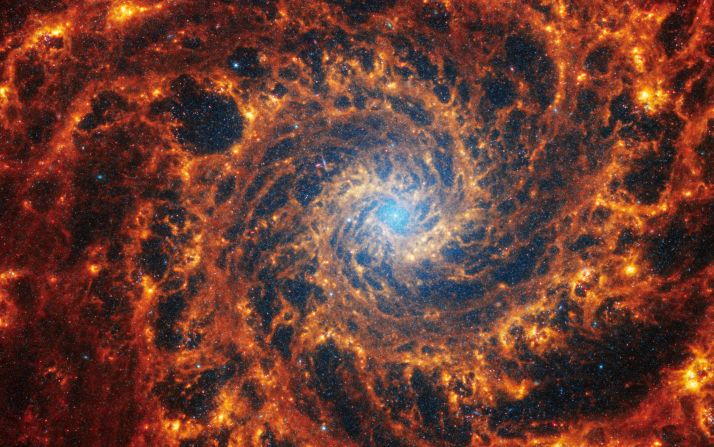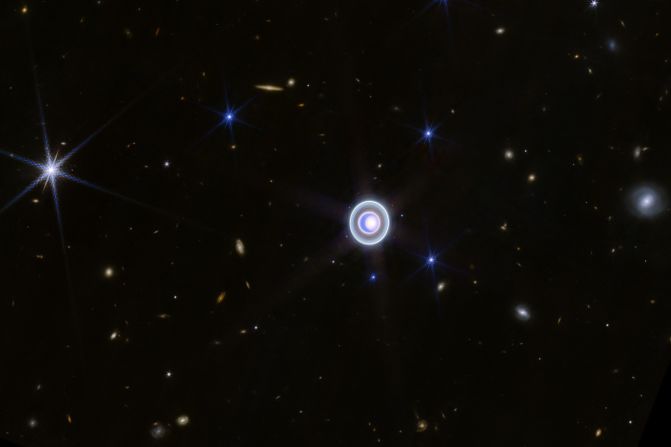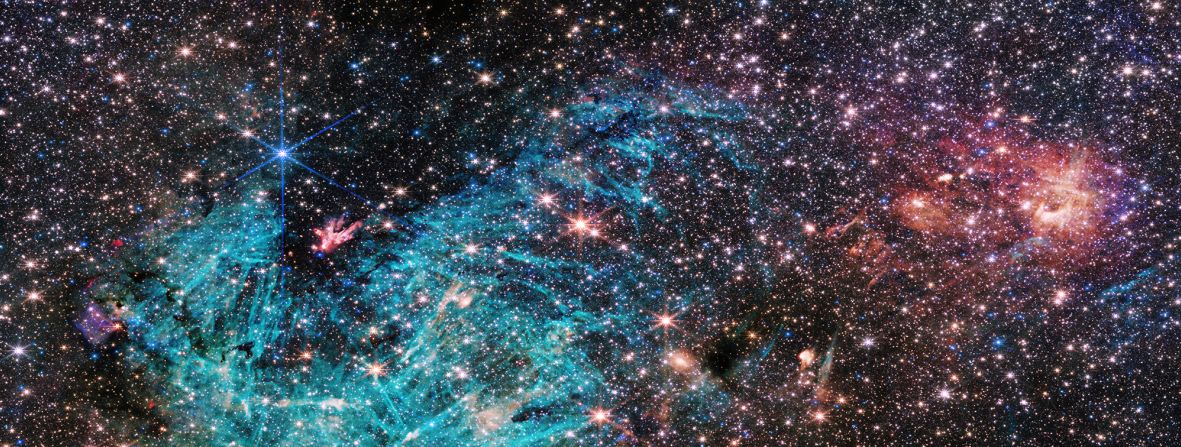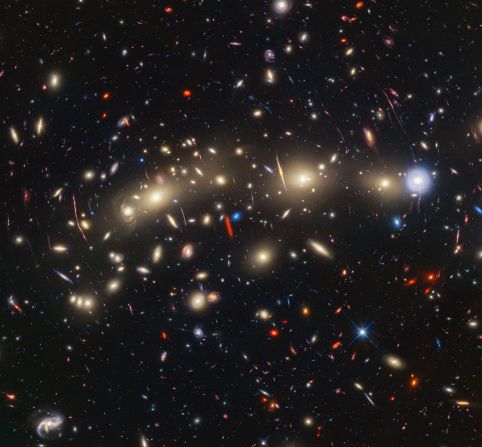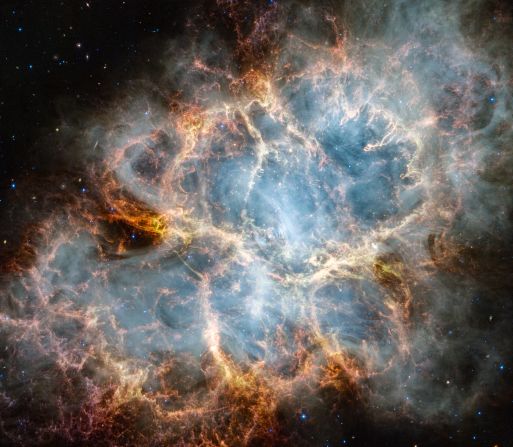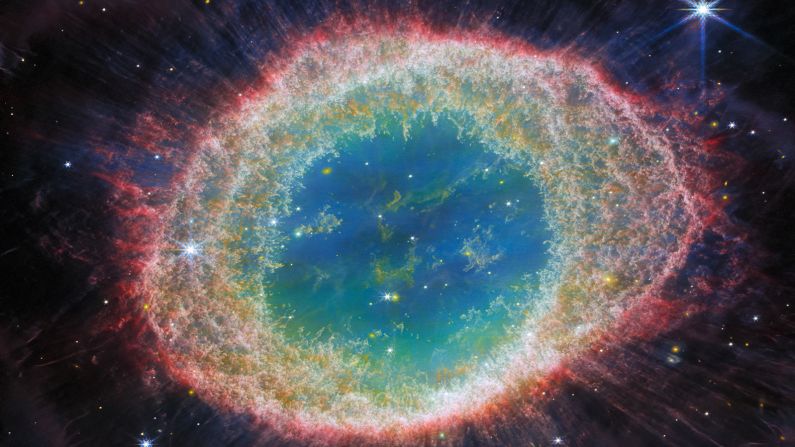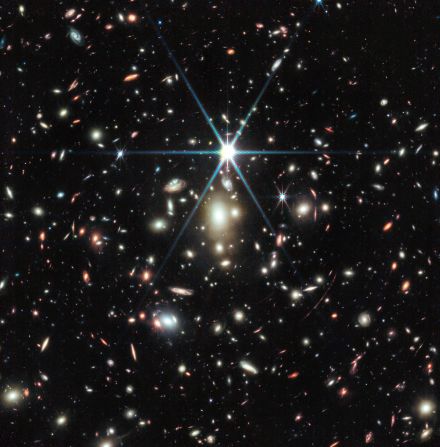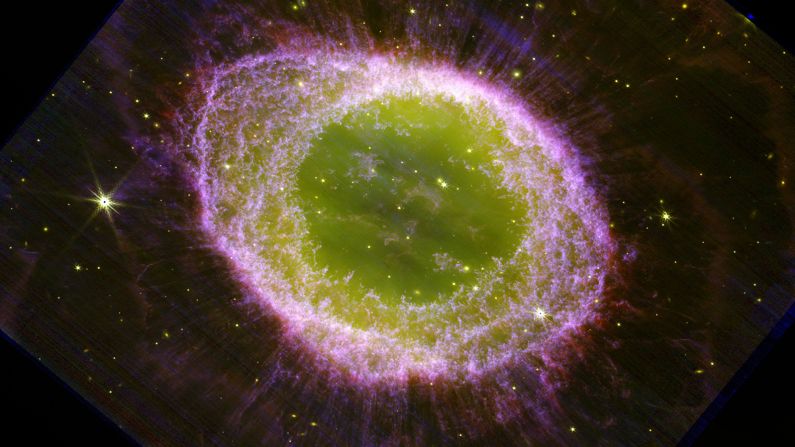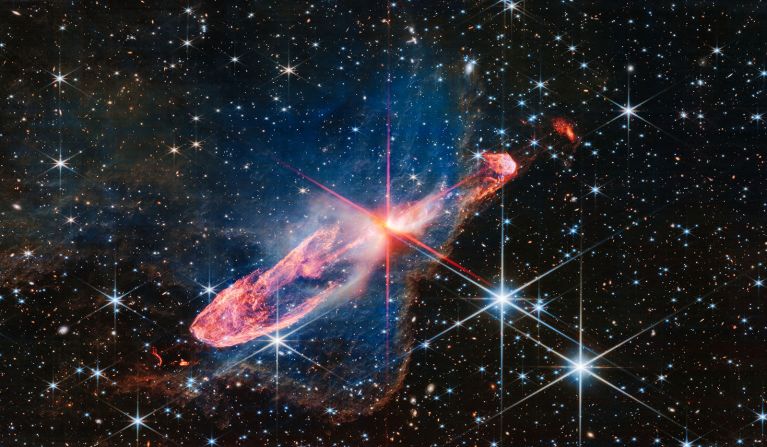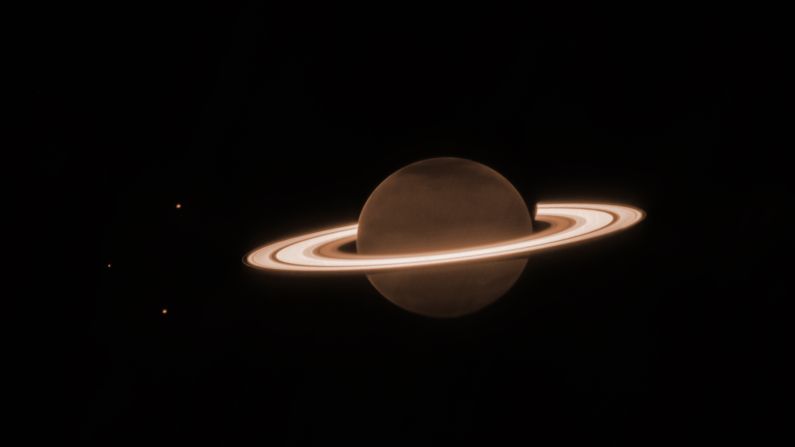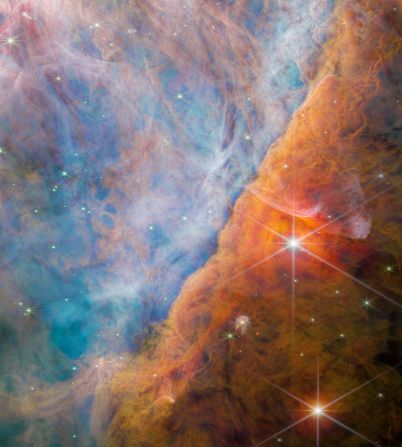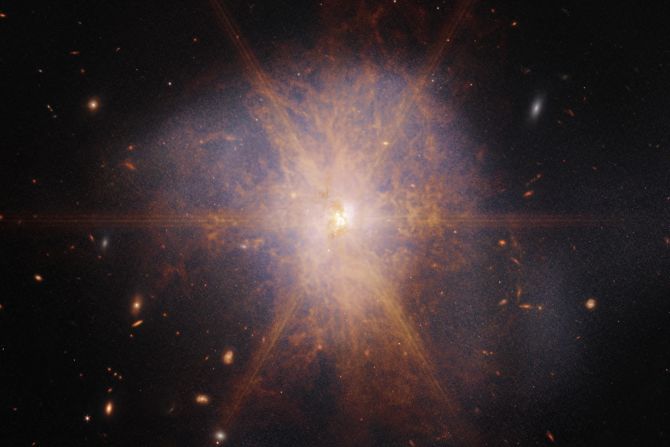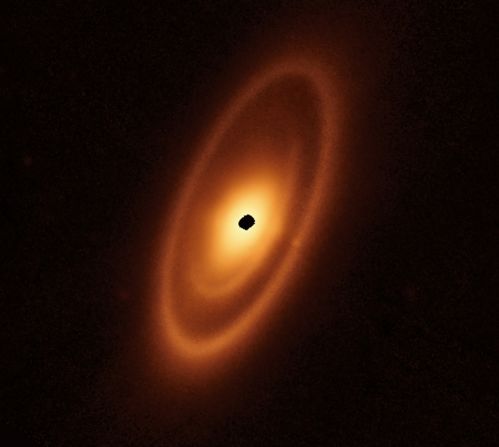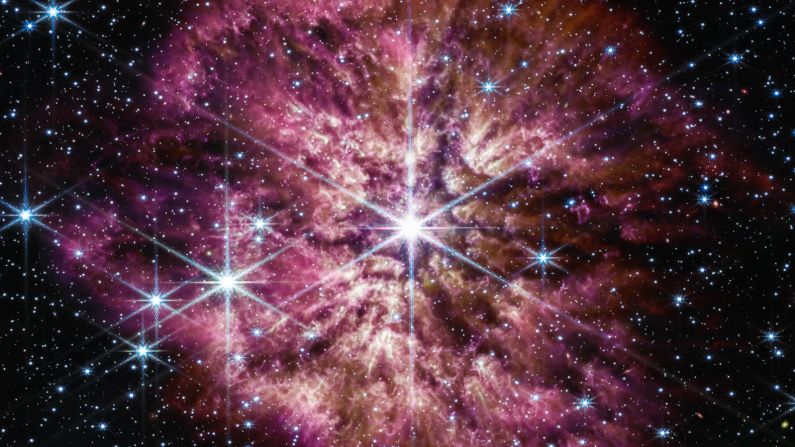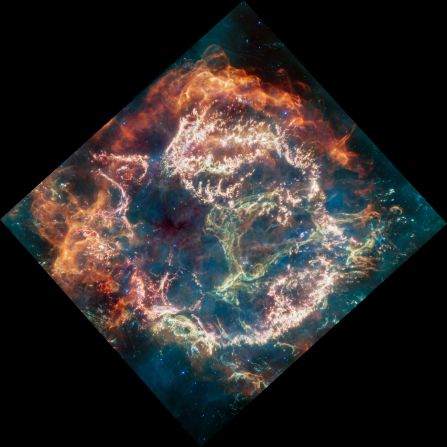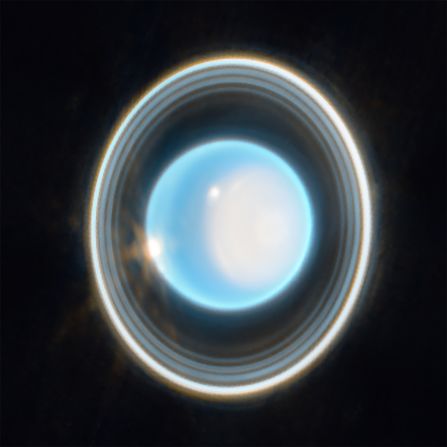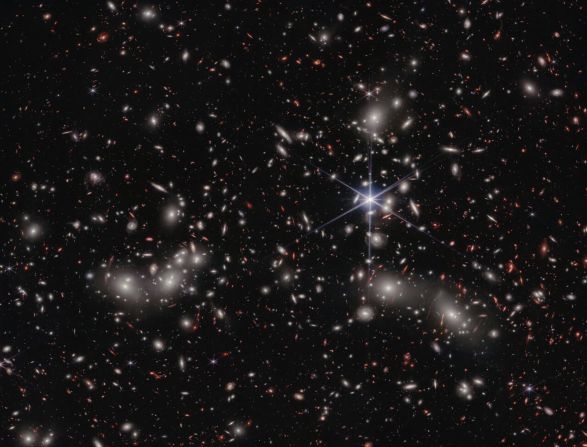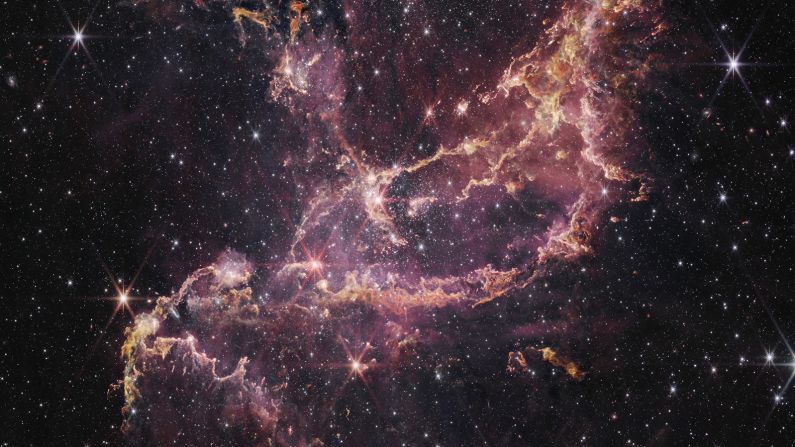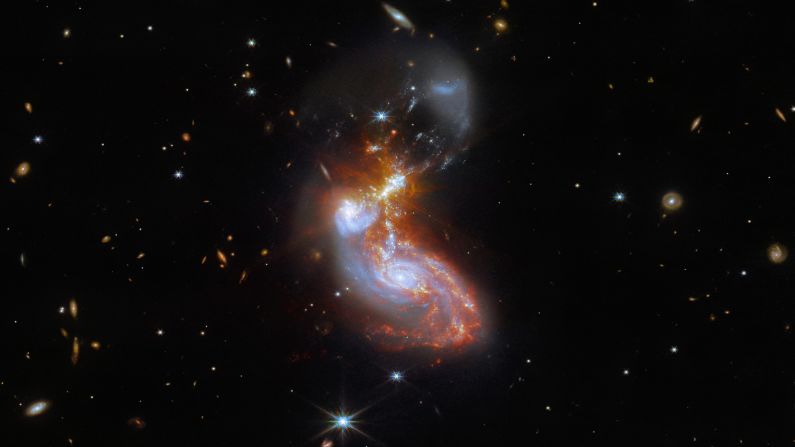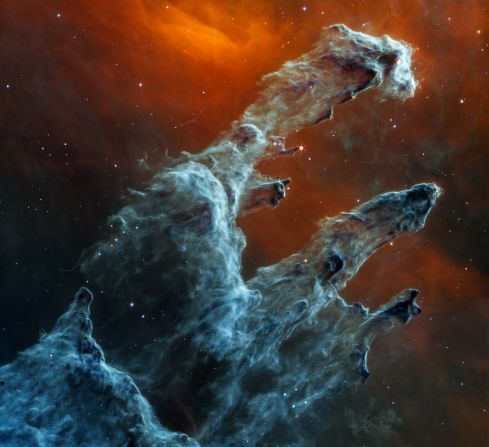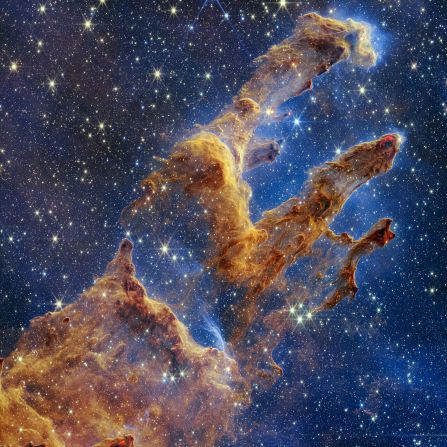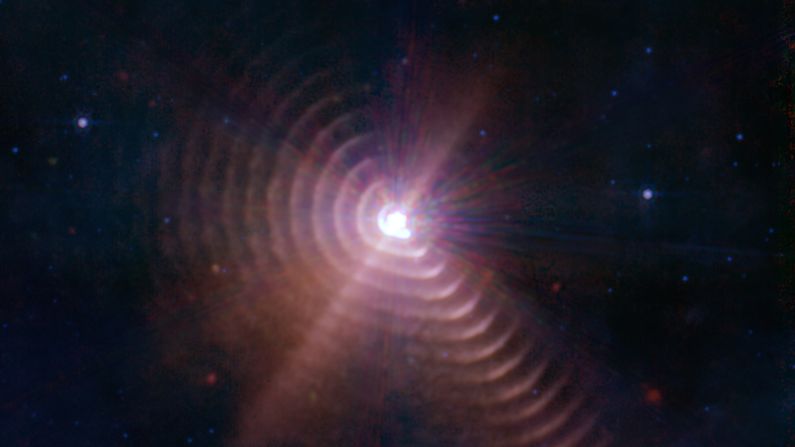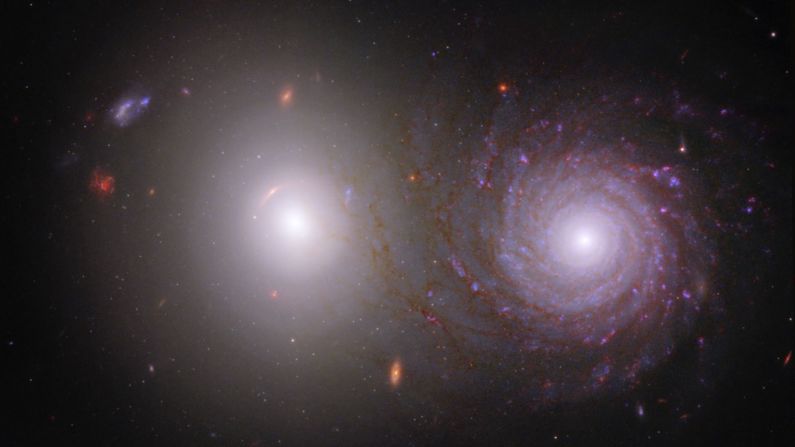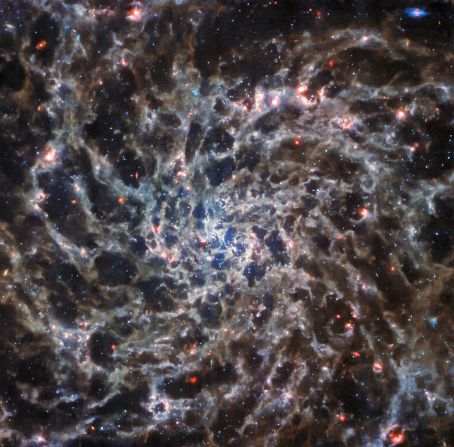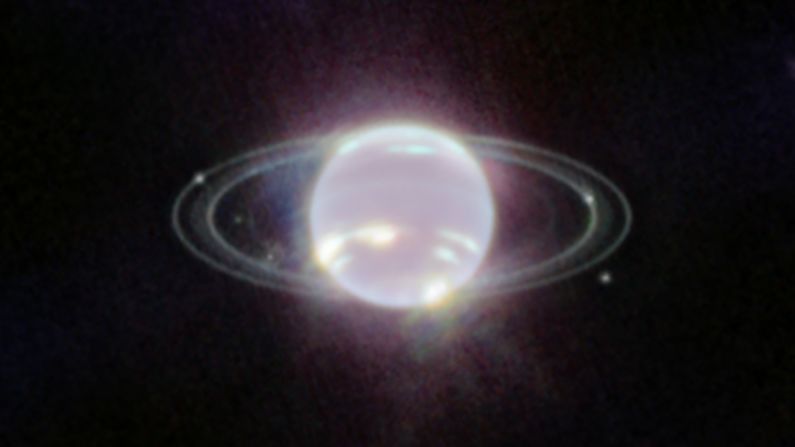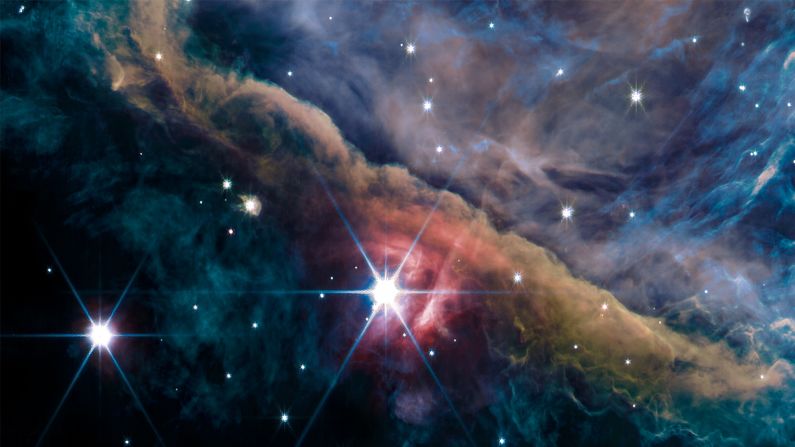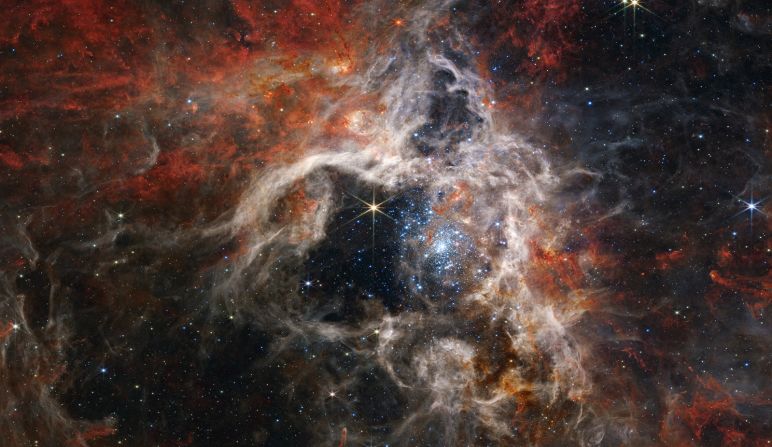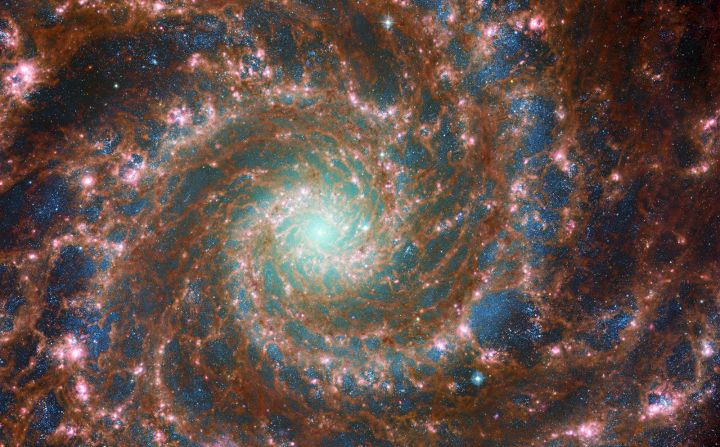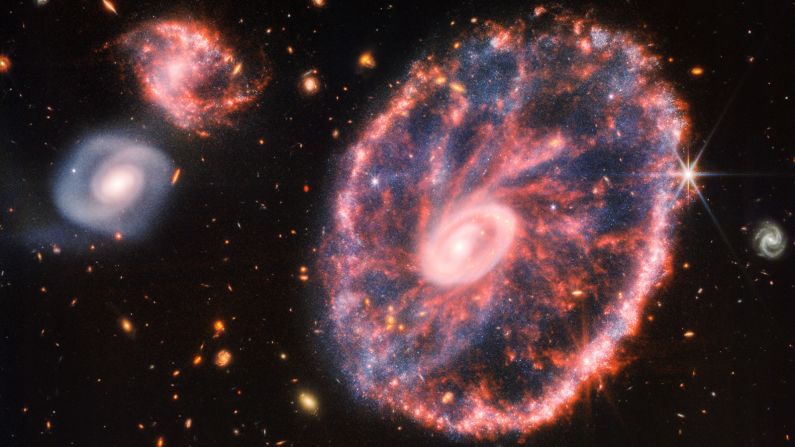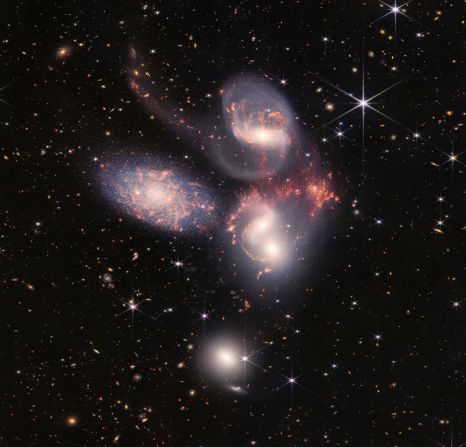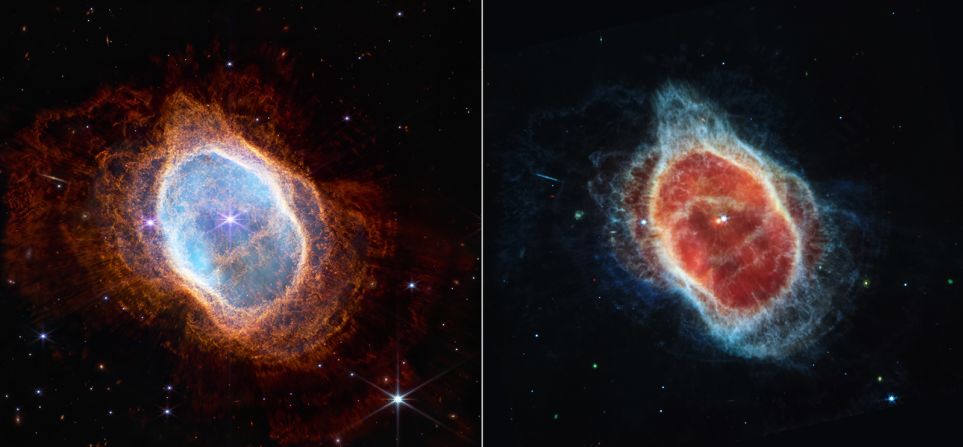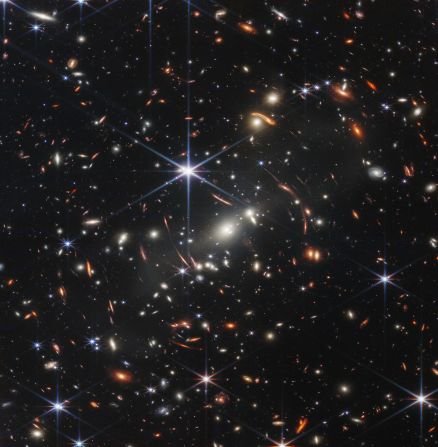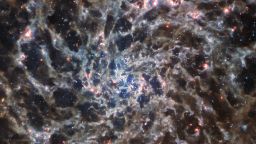Sign up for CNN’s Wonder Theory science newsletter. Explore the universe with news on fascinating discoveries, scientific advancements and more.
The very first image captured by the James Webb Space Telescope is revealing some of the oldest stars and galaxies in the universe, including one that looks like a sparkler, according to new research.
Webb’s first stunning view was released by President Joe Biden on July 11 and it is “the deepest and sharpest infrared image of the distant universe to date,” according to NASA.
Webb’s first image shows SMACS 0723, where a massive group of galaxy clusters act as a magnifying glass for the objects behind them.
Called gravitational lensing, this created Webb’s first deep field view that includes incredibly old and faint galaxies. Deep field observations are lengthy observations of regions of the sky that can reveal faint objects.
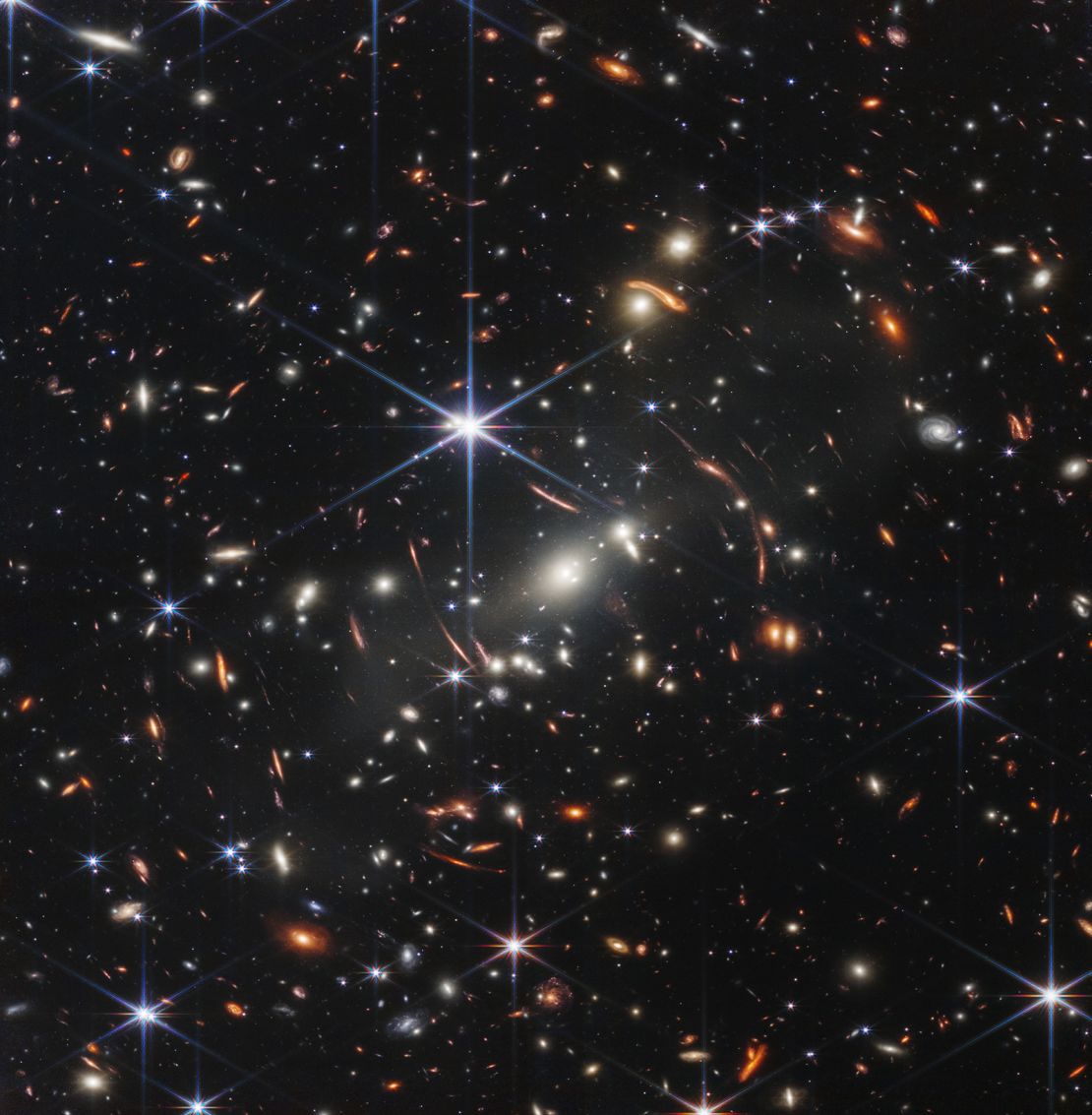
Some of these distant galaxies and star clusters have never been seen before. The galaxy cluster is shown as it appeared 4.6 billion years ago.
Now, researchers have conducted an analysis of Webb’s first deep field and spotted the most distant globular clusters ever seen. These clusters are dense groups that contain millions of stars, some of which may be the first and oldest stars in the universe. A study detailing the findings were published Thursday in The Astrophysical Journal Letters.
“JWST was built to find the first stars and the first galaxies and to help us understand the origins of complexity in the universe, such as the chemical elements and the building blocks of life,” said Lamiya Mowla, co-lead study author and Dunlap Fellow at the Dunlap Institute for Astronomy & Astrophysics at the University of Toronto, in a statement.
“This discovery in Webb’s First Deep Field is already providing a detailed look at the earliest phase of star formation, confirming the incredible power of JWST.”
One feature of interest in the deep field has been nicknamed the Sparkler galaxy because it appears to be surrounded by red and yellow sparkling dots. The galaxy is located nine billion light-years away.
The sparkles could either be young clusters where stars were actively forming just three billion years after the Big Bang, or they might be ancient globular clusters of stars from the early days of the galaxy’s formation.
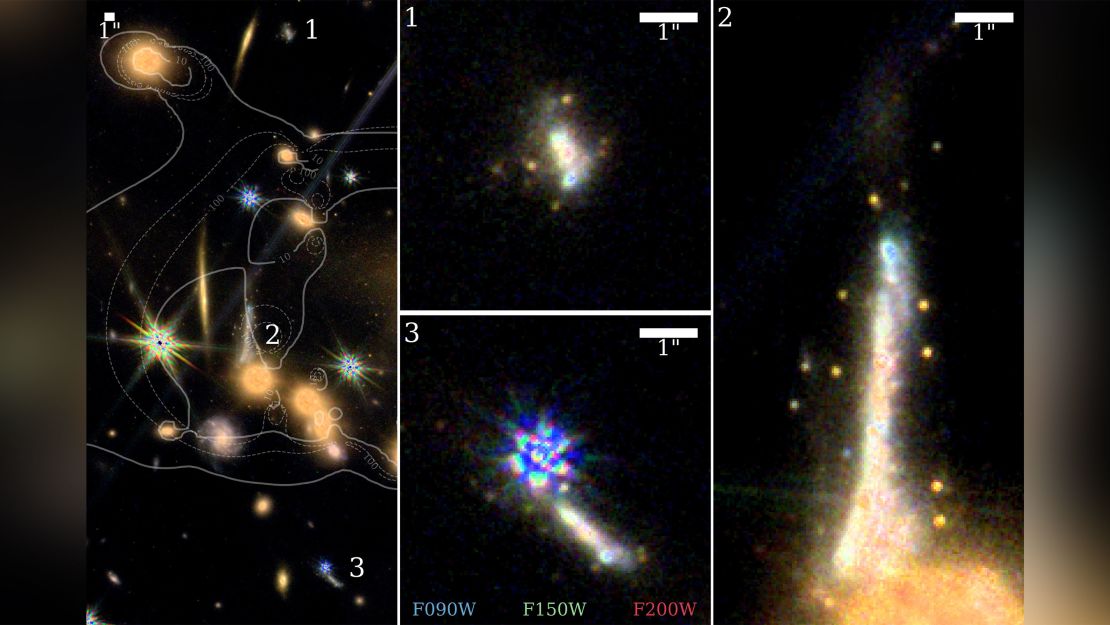
The team analyzed 12 of the sparkles and determined that five of them are among the oldest known globular clusters ever found.
“Looking at the first images from JWST and discovering old globular clusters around distant galaxies was an incredible moment, one that wasn’t possible with previous Hubble Space Telescope imaging,” said Kartheik G. Iyer, co-lead author of the study and Dunlap Fellow at the Dunlap Institute for Astronomy & Astrophysics at the University of Toronto, in the statement.
“Since we could observe the sparkles across a range of wavelengths, we could model them and better understand their physical properties, like how old they are and how many stars they contain. We hope the knowledge that globular clusters can be observed at such great distances with JWST will spur further science and searches for similar objects.”
Webb’s sensitivity and resolution is shedding light on previously unseen aspects of the universe, like the clusters surrounding the Sparkler galaxy.
“These newly identified clusters were formed close to the first time it was even possible to form stars,” Mowla said. “We are observing the Sparkler as it was nine billion years ago, when the universe was only four-and-a-half billion years old, looking at something that happened a long time ago. Think of it as guessing a person’s age based on their appearance — it’s easy to tell the difference between a 5- and 10-year-old, but hard to tell the difference between a 50- and 55-year-old.”





